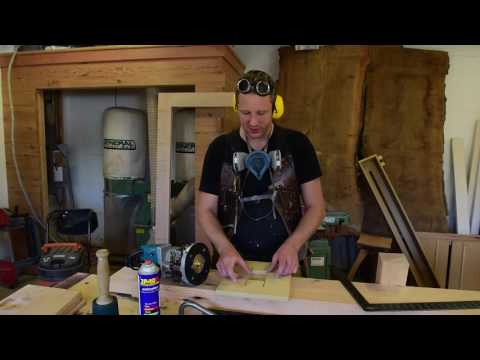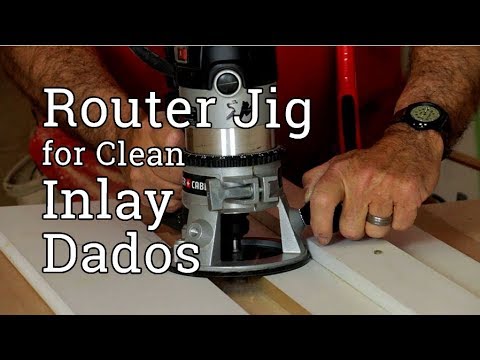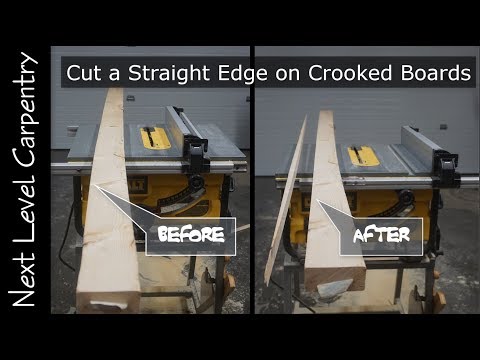Use scraps to offset the straight edge allowing you to cut each edge of the dado with opposite edges of a router bit
Dado joints are a time tested joinery method for cabinet carcass construction. But how do you make 23/32 inch dado for (expensive) pre-finished plywood with a 3/4 inch router bit?
Answer: Spacers.
What you need:
- Router
- Straight edge
- Four clamps
- 2 scraps of whatever fits into the dado
- 2 pieces of something that is the same width as the router bit (Jeremy uses pieces of steel slab that are 1/2 inch thick)
- A couple more blocks of wood (doesn't really matter what they are)
Step by step:
- Mark the dado location and width.
- Establish one edge of the dado first. This is the side opposite the side of the straight edge placement. So, if you place the straight edge on the left of the dado, establish the right edge of the cut, and vice-versa)
- Measure the correct distance from the edge of the bit to the edge of the router and clamp the straight edge in place.
- Run that router down the edge.
- Establish the second side of the dado by moving the straight edge exactly the right amount.
(easier said than done, right?)
Wrong. Here's how:
- Place the wood that is supposed to fit into the slot along the back side of the straight edge.
- Place another block of wood against the dado scraps and clamp it to the work piece. Now, the width between the block and the straight edge is exactly the width that the dado should be. BUT, the width of the router bit needs to be subtracted because the opposite edge of the bit will establish this opposite side of the cut. Make sense?
- Place the spacer, steel stock, in the case of the video, against the block, between the block and the straight edge.
- Do the same thing at the opposite end of the straight edge (clamp a block and place a spacer.
- Push straight edge against the two blocks and clamp in place.
- Run that router down the edge.
- All that is left to do is hog out any excess material in the middle, if your dado is wide, like Jeremy's.
—Jeremy Schmidt is a woodworker, metalworker, maker and YouTuber











